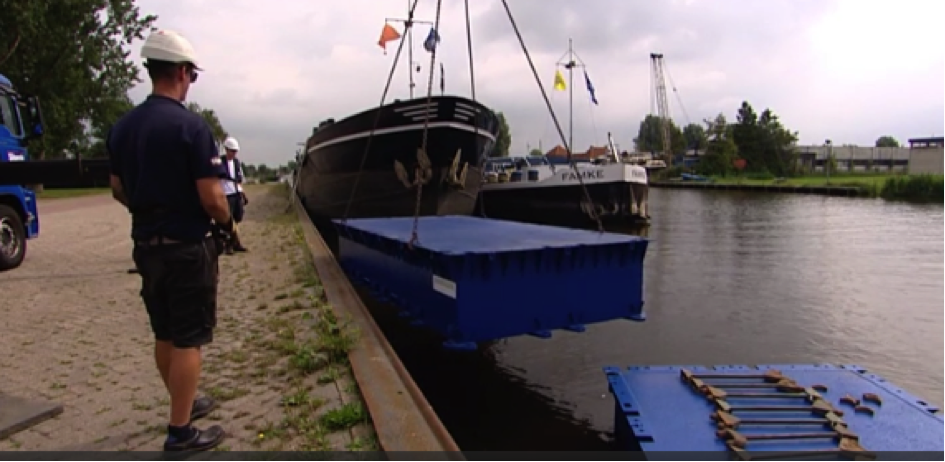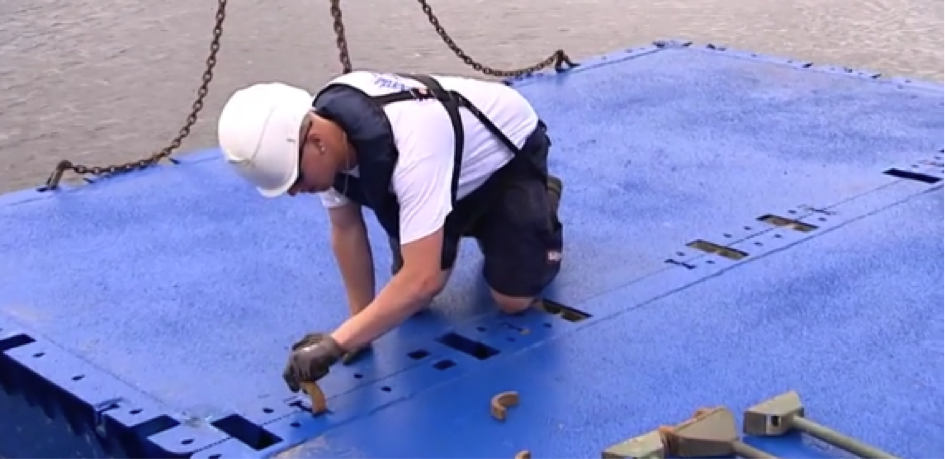Europontoons was a guest at the televisionshow ‘Ondernemend Nederland’ (= Entrepreneurial Netherlands), watch the video (2 min) and get an impression of our company.


Working on the water surface provides benefits to contractors. New space is created, and existing infrastructure is not burdened unnecessarily. A floating work platform (pontoon) makes it possible to work from the waterfront. Europontoons does not only deliver pontoons, but it also produces them.
Manufacturing of pontoons
The measurements of pontoons are important, so the steel of a pontoon is cut with a laser. Subsequently, the pontoons are manufactured from this steel and totally blasted. Thereafter, the inside is coated, the deck placed and sealed to the outside. The pontoons are completely pressed in order to ensure that all the oxygen has been removed from the pontoons. This prevents the formation of corrosion and makes the pontoons also more durable. Finally, the pontoons are tested in the water on specifications like dimensions.
The pontoons can be easily linked together and are also widely used for work on the quay. The pontoons nowadays all comply with EU guidelines (CE mark), this was not always the case. For example, the steel thickness was sometimes 2.5 mm. Today, the steel thickness is 4 mm, which is certainly an important and safe change.
Safety first, while working with and on pontoons
As a supplier of pontoons Europontoons notes the changes in market demands. The importance of security is increasing, and the response is that of the adoption of new and improved measures. As Europontoons can supply the pontoons with:
- A certification which meets the requirements of the ILT. The certificate has a unique certification number, which is also present on the pontoon. The certificate is valid for 10 years;
- Its own unique serial number;
- CE (CE see a sample form)
In addition, Europontoons can also help with new certification for specific composition of the pontoons (eg a crane), or parent material which is in your possession.


